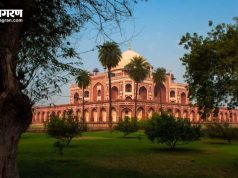COVID-19 forced the entire world to stay home and this brought tourism to a halt. Positive signs were seen over the last few months and especially during the festive weekends last year. Latest travel trends including weekend getaways, family travel, and introduction of new tourism attractions started contributing to the upward trajectory of domestic travel.
Since the reopening of hotels towards the end of August 2020, and also the launch of the vaccines, people have started moving out and tourist destinations are now seeing the return of travelers. People are now traveling without any fear, though only to domestic locations. Outbound travel and travelers are still a distant reality.
Jaipur, the Pink city in the desert state of Rajasthan has always been the top destination for travelers. Very close to Delhi and an ideal weekend getaway, Jaipur is famous for its forts like the Amber and Nahargarh Forts, museums, handicrafts, block printing, shopping experiences, Jantar Mantar, the astronomical marvel and a UNESCO world heritage site, and Hawa Mahal among many others.
Pre-COVID events
Various events used to be organised in Jaipur like the light-and-sound show at Amber Fort, illuminations at Hawa Mahal, at the astronomical marvel, Jantar Mantar, etc., had to be cancelled during the lockdown because of coronavirus. The foreign as well as domestic tourist footfall dwindled and came to zero.
Going forward, as the pandemic is waning and tourism activities have started to pick up, Rajasthan Tourism also took the cue and devised a few new events and also restarted some old and popular events that used to attract a lot of tourists. This initiative will further boost tourism in the state in the field of culture, history and heritage.
New initiatives
Night Sky Tourism
They recently started a new chapter, namely Night Sky Tourism, Jaipur already is on the astronomical map of the world vide Jantar Mantar, that was built in 1734 by Sawai Jai Singh II, and now, the city will have the new Night Sky Tourism to provide an opportunity to city-dwellers, students, researchers and tourists to observe the night sky with the help of telescopes and other astronomy equipment free of cost.
The project was inaugurated recently by the state government’s Minister of Art & Culture in the presence of the Chief Secretary, with an objective to bring more tourists to Rajasthan. The initiative will enable people to view celestial bodies on special occasions from different spots across Jaipur.
jaipur pink city

Light and sound show at Amber Fort

Amber Fort
Jaipur also witnessed the restart of the much-loved light and sound show at Amer Fort on the Republic Day, and everyone got enthralled when the fort lit up in the brightest colours and the mesmerising voice of superstar Amitabh Bachchan echoed through its chambers. Incidents from Amer’s history are presented in the evening show with great finesse through folk narratives, beautiful music and stunning visuals. After ensuring complete adherence to the COVID guidelines, the unique presentation has been revived by the fort administration.
Amber Palace or more popularly known as Amber Fort, situated on the top of a hill overlooking Lake Maota provides a great backdrop for a spectacular Sound and Light Show in the evening. The symphony of lights makes the ambiance hypnotic as the whole fort comes to life as the lights light up the night sky.
At a short distance of 11 kms from Jaipur, Amber Palace built in red sandstone and marble is one of the finest examples of Rajput architecture that was the ancient capital of the Kachhawah rulers. The original palace was built by Raja Man Singh in 1592 and additions were made later by Sawai Jai Singh.
Illumination at Hawa Mahal
Impressive architecture of Hawa Mahal also was illuminated at night in the city.
Known as the ‘Palace of the Winds’, it is the most visited tourist attractions in the city. This beautiful five-storey palace was constructed in 1799 by Maharaja Sawai Pratap Singh and is located in the heart of Jaipur. The palace is built of red and pink sandstone, and is in a pyramid shape with 953 windows or ‘Jharokhas’ on the outside walls.
Because of the Purdah system, Rajput royal ladies were not supposed to be seen by strangers or appear in any public area. Hence Hawa Mahal was built as an extension to the nearby City Palace and allowed the royal ladies to enjoy every day street scenes and royal processions without being seen from the honeycomb shaped and beautifully carved peep hole sized windows.








